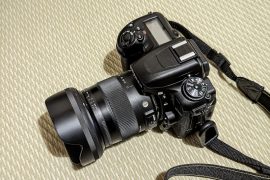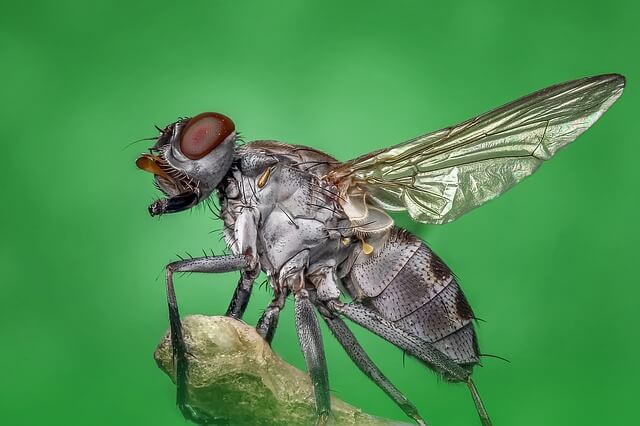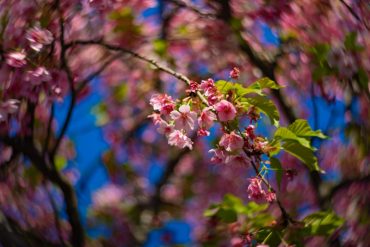Crystal ball photography has become immensely popular in recent years. The ability to selectively create a perspective that adds artistic distortion and focus to the frame is obviously appealing to a light-centric artform like photography! However, there’s a lot more to crystal ball photography than simply placing the ball in the frame and snapping away. So let’s talk about how to get the most out of some interesting crystal ball photography ideas!
Five Crystal Ball Photography Ideas
If you’re interested in understanding how to choose and set up your crystal ball for photography, take a look at my previous article on Crystal Ball Photography Tips! But in this discussion, I’d like to go further into some advanced crystal ball photography ideas you can try!
Making the Familiar Unfamiliar Using Crystal Balls
Do you live in an area that’s already intensely popular with photographers? Major metro city skylines, local landmarks, and even natural wonders may already be entirely played out in terms of creativity. What if you want to work with what you have but stand apart from what’s already popular and well-known?
Crystal ball shots can add an entirely new dimension to what’s familiar. Instead of yet another Eiffel Tower or NYC skyline photo, adding a crystal ball can create a different perspective that invites further contemplation. The strength of a crystal ball in photography is the ability to selectively blur out background elements by placing the ball appropriately. And by shifting both the ball and your position relative to it, you can create fisheye distortions that add drama to what was once a familiar composition!

Photo by Chris Grafton on Unsplash

Image by Florian Godfroid from Pixabay
Landscape Crystal Ball Photography
Landscape photography is an especially fun genre to combine with crystal ball photography! Crystal balls bring textures into sharp focus while adding the bokeh (background blur) element, something not typically emphasized in landscape photography!
Natural elements such as trees, clouds, sunsets, and rocks add additional textures to the background that can be incredibly captivating. While wide-angle lenses are the most common for both crystal balls and landscapes, telephoto or macro perspective can be powerful here. Typically, we want to include as much as possible within the frame of a landscape image but this is one crystal ball photography idea you should try!
Macro and telephoto lenses crop out even more of the frame for a selective take on a given subject. This creates even more background blur, ensuring that the crystal ball contains all of the landscape details for study. The tight crop also helps remove any distracting foreground elements that would take visual weight away from your crystal ball!
On the other hand, keeping foreground elements like flowers and grass can enhance the story being told. Bits of clover and meadow grass, combined with Golden Hour sunlight or dewdrops, add a delightful narrative to the crystal ball image on display!


Photo by Ray Bilcliff from Pexels
Crystal Ball Portraits
Another of my favorite crystal ball photography ideas is using them in portraiture. One element to keep in mind is the slight distortion a crystal ball adds to the subject its magnifying. You’ll need to align the ball so that the model is centered as perfectly as possible to avoid causing their features to swirl, unless that’s what you’re going for, of course.
Having the model seated, rather than holding the ball, really helps here. A person’s arm is never perfectly still, and you’ll likely have to take several shots if they are holding the ball.
Also, consider the distance from the model to the ball. Are you using a wide enough aperture to blur the background so that the viewer’s attention is fixed on the ball? Lenses of f/2.8 or faster are generally recommended here. But a telephoto or macro lens, again, helps selectively blur the background even more, so that no distracting elements are present.
Lighting is very important with crystal ball portraits because you’ll only see bad lighting made worse through the magnification they provide. Off-camera flash, attention to natural light conditions, or working on cloudy days, which provide well diffused natural light, ensures your model is well illuminated.
That said, strong directional light used intentionally has even more impact in a crystal ball portrait. Given their modern appeal, nighttime city shoots combine the best contemporary elements of both urban portraiture and the crystal ball itself! The multicolored background blur you’ll get from the city lights is well worth the time it takes to compose your model just right!
Lastly, remember that crystal balls invert the image they display. If you’d prefer having the crystal ball’s refraction be right-side up, then you’ll need to work on your post-processing skills…

Image by Tim Hill from Pixabay
Inverting the Crystal Ball Image
As I mentioned earlier, the image displayed by your crystal ball is inverted. But what if your crystal ball photography ideas demand a right-side-up image instead? Well, by using the magic of post-processing software, you can flip that section of the image so that it looks like a normal magnified display.
In order to invert the refracted image, you’ll need to be able to create Layer Masks in your software of choice. Not every program can do so, and of the ones that can, very few are free. The best programs that can selectively invert the crystal ball image include Adobe Photoshop and Affinity Photo. Inverted crystal ball images are especially useful for portraiture where you can still see the subject in the background. Having an upside-down model in the background often looks strange unless you apply some digital wizardry.

Abstract Crystal Ball Photography
Lastly, there is abstract crystal ball photography. Abstract photography can be hard to define because it’s such a free genre of art. But we can safely say that it involves presenting subjects in a way that’s not literal. Rather than a typical portrait or landscape, an abstract presentation might involve a macro shot of the textures in an eye or fireflies dancing in a dark forest.
Crystal balls add another dimension to abstract images, allowing you to add emphasis to textures, hues, luminance (brightness), and other interesting elements without having a definite subject to focus on! Truly, this might be my favorite of all the crystal ball photography ideas out there because it’s so versatile and playful!

Photo by Raimond Klavins on Unsplash
Thanks for reading, I hope you enjoyed the article, in case you have any questions just drop them below & I will be happy to answer you.
If you enjoy the site, don’t forget to subscribe, we will only inform you when a new article is posted.










When it comes to a crystal ball, I want something not too big, definitely not too heavy, and excellent image quality. An 80mm size is a good option for my photographs. The balls I’ve been photographing with are 100 or even 120mm in diameter. Those balls are weightier, which would put a lot of people off carrying them around.
Thanks for your input Paolo!
wow, what an interesting topic. I was into photography for a while it seems, but I often got disheartened because of just how many photographers there are shooting the world right now. I felt like there was no topic left to be brand new at, all the stones had been turned already. But with techniques like this one, it makes the subject come alive again and I think this was a really great, informative article to do that in. thank you! Also, you chose the perfect photos for this topic!
Thanks for your comment Rene! glad that you liked the topic.